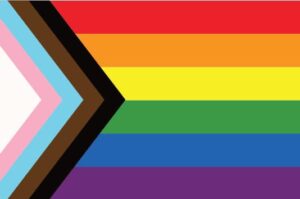Starting a business for the first time can seem like an overwhelming process. The good news is that support and guidance is available. The Self-Employment program offered at the Career Centre can assist eligible individuals in determining if they are a good fit for entrepreneurship, and may provide support in acquiring the specific skills needed to create and maintain their own employment.
Something I always recommend to someone who is thinking of starting a business is to seek out information from those in the industry and build a network of mentors. I consistently ask business owners, “what advice do you wish someone had given you when you were first starting your business?” The following is a collection of my favourite responses, which I hope you will find appropriate as we celebrate Small Business Week this October.
“Do one thing and do it well. When we first opened (the restaurant), I often found myself trying to provide all thing to all people. I thought everyone was my customer. But what was really happening was that we were not offering anything “outstanding”. Quality was inconsistent and we were fragmented in our service standards. Once we narrowed down our focus of our product and style of service, our customers’ experience improved and they were able to identify what they could come to expect when they came in.”
“Make a plan, work the plan”.
“Have an end game plan – but know it may change. When we started our business (retail) we never thought about how we would end our business. We assumed our son would take over, but that didn’t happen. Do we scale back? Do we close the doors? Can we sell it? What’s the business actually worth? We didn’t have an exit strategy and when we realized it was something we could have been planning for, we probably would have made some decisions differently (i.e. lease terms and inventory levels.)”
“It’s easier to save a dollar than to earn a dollar. Spend like you don’t have money and eventually you will have the money.”
“Always be open to learning. Listening to your customers seems like common sense but it’s surprising how often owners think they know more about what their customers want than their customers. Also it pays to be observant of what other businesses are saying and doing – as well as what they are not saying and doing. Maybe no one is offering the product or service for a good reason you just haven’t had a chance to learn about.”
“Talk to a bookkeeper or an accountant before you start…..make sure you know the steps to take, and in what order. There are a lot of nuances to be aware of and mistakes that cost time and lots of money down the line!”
“You are not your customer. Just because you think an idea is awesome or terrible, or something is too expensive or too cheap, doesn’t mean that’s what the market is seeing/thinking or willing to pay for.”
“Most employees are golden if you treat them like gold. Over the years we have hired several employees who have no experience, but who have outstanding “can do” attitudes, and they have turned out to be our best hires. We offer average compensation, have regular staff meetings, realistic job descriptions, and we make training available where it makes sense for the position and the person. Our turnover rate is lower than what we hear in our industry and our staff tell us it’s because they feel valued. Maybe, it sounds like a bit of a cliché but we try to treat our employees how we would want to be treated.”
So there’s just a few tried and trusted words of wisdom if you are considering starting a business.
The following links are great resources as you start to discover more about the opportunities, guidelines and processes for self-employment and eligible support programs.
WorkBC’s Self Employment Program at the Career Centre
Lorrie Mohl
Employer Services Coordinator
